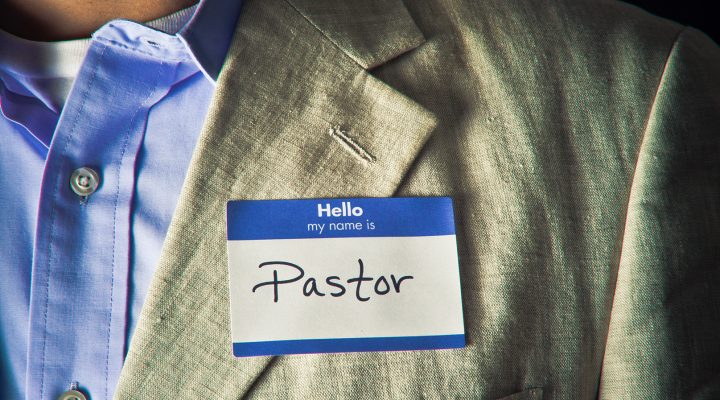The mental and physical health of America’s clergy may be better than previously reported, according to new data from the Hartford Institute for Religion Research.
“There is no question that at this moment many clergy are stressed, exhausted and have entertained thoughts of quitting. However, our recent research also shows a different, more resilient side of religious leaders that must be highlighted and explored,” an introduction to the report states.
Scott Thumma, professor of sociology of religion at Hartford International University, said the new study “found that overall, clergy tend to be healthier than the general public in terms of mental, emotional and spiritual well-being. However, there were significant variations, with 34% of clergy still rating in the ‘fair’ or ‘poor’ range on a composite wellness measure.”

The study found younger clergy, particularly Millennials, “reported lower levels of well-being compared to older peers,” he added. “Maintaining spiritual practices like prayer and a strong sense of pastoral calling were tied to positive wellness. Clergy health also correlated with positive congregational dynamics like willingness to change and vitality post-pandemic.”
Yet, “nearly half of clergy claimed frequent or occasional loneliness, highlighting relational challenges. The report emphasizes that enhancing clergy wellness requires a holistic approach addressing personal practices, relationships, spiritual nourishment, congregational cultures and systemic factors. Supporting clergy to flourish sustainably necessitates persistence in tending to the interplay of factors impacting their health.”
The Hartford Institute hosted a webinar last week with pastors commenting on the findings. The new report is a companion to an earlier report looking at clergy discontentment with the ministry profession and their current congregation.

That earlier report, titled “’I’m Exhausted All the Time’: Exploring the Factors Contributing to Growing Clergy Discontentment,” sounded a warning about the state of clergy mental health during and after the COVID-19 pandemic.
But the new report focuses on “more positive messages about the health and wellness of religious leaders and the characteristics that enhance their sense of mission and call in this sacred vocation.”
Hartford researchers found a majority of U.S. clergy seem “quite healthy. The overall level of health and wellness exhibited by clergy is impressive — even given the level of the pastoral discontent uncovered in our earlier report.”

Researchers used a slightly modified version of the Harvard Flourishing Study battery of 11 questions with six additional items to gauge health and wellness on a scale of 0 to 10.
“Compared to these averages of a national sample of Americans from summer 2022, clergy seem to be doing better than the general public on most of the items we compared,” the report states. “Clergy have a higher mean on all but one item, and clergy are healthier by half a point or more on most items. The largest gap between clergy and the public is on the item ‘I understand my purpose in life’ where clergy have a mean of 8.6 out of 10 and the public have a mean of 6.8 (a difference of 1.8 points). The only statement where clergy leaders are below the general public is ‘my relationships are as satisfying as I would want them to be’ where clergy are only 0.1 point lower than the general population.”
The researchers conclude: “Based on these comparisons, the clergy within our study appear to be quite mentally and emotionally healthy.”
But there are, of course, exceptions, they said, and not all clergy score at the average or above. In fact, there are wide gaps between the haves and the have-nots among clergy on these measures.

In the Hartford study, the average clergy person is 59 years of age and has been at their church position a median of seven years. They are more likely to be white (80%), male (80%), employed full-time (75%), and a solo leader (60%) rather than part of a senior/assistant team (31%).
Some key findings:
- Most ministers take at least one day off throughout the week, but relatively few have had a sabbatical in the past decade.
- Only a small percentage of pastors serve more than one congregation or also serve as a chaplain in addition to their congregational ministry, yet nearly a third of clergy have paid employment beyond congregational ministry. Nearly a quarter of full-time clergy have additional employment outside their church positions.
- For most clergy, the importance of faith in their everyday lives and personal spiritual practices such as prayer and Scripture reading either stayed the same or increased in the past three years.
- Neither gender nor race were found to be highly predictive of overall health and wellness scores.
- 29% of clergy claim to be in “great” physical health, 41% of clergy say they are in “good” physical health, 21% are in “fair” physical health, and 10% are in “poor” physical health.
- Physical health is related to overall health and wellness such that a person in “poor physical health” has poorer overall health and wellness (excluding the physical health item) and a person in “great” physical health is more likely to have “great” overall health and wellness.
- Despite notoriously low wages, 31% of clergy said they are in “great” financial health, 34% said they are in “good” financial health, 24% are in “fair” financial health, and 12% are in “poor” financial health. Again, financial health is correlated with overall health and wellness.
- Generational gaps did appear. A larger percentage of Millennial clergy leaders scored lower on wellness compared to older clergy. Boomer clergy are more likely to have “good” or “great” well-being.
- The longer the leadership tenure, the more positive the clergy described their well-being.
- There is no significant difference in health and wellness between solo leaders and clergy with a ministry team or partner.
- There is a direct correlation between wellness and the urge to leave ministry. “Over half of clergy (54%) who are seriously considering both of these leaving options fell into the ‘fair’ or ‘poor’ health and wellness groups, as compared to only 22% of clergy considering neither option. On the other hand, a third (34%) who had no thoughts of leaving scored their overall wellness in the ‘great’ range.”
- Only 17% of clergy reported having had a sabbatical within the last 10 years. This percent has gone down from 23% since 2020. However, having a sabbatical “did not dramatically increase one’s wellness, perhaps due to the relatively few taking them” but it did anecdotally provide refreshing for those who commented individually on having taken a sabbatical.
- 58% of clergy reported seeking guidance from a spiritual director, counselor or therapist in the last three years.
- Relational support remains a challenge. “More than a third of clergy (37%) claim to be frequently lonely, 13% are often lonely, 21% are sometimes lonely, and just 28% of clergy report rarely being lonely.”
Related articles:
The terrible, horrible, no good, very bad season | Opinion by John Norman
New study documents how race influenced congregational reactions to COVID challenges
On the other side of the pandemic, the report from America’s churches is mixed
Yes, technology has become more critical for U.S. churches since pandemic


